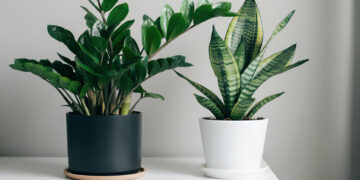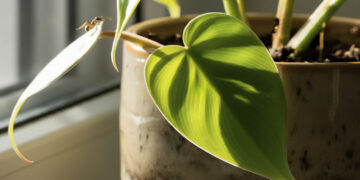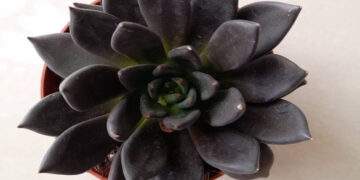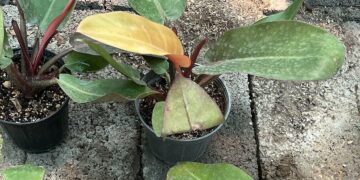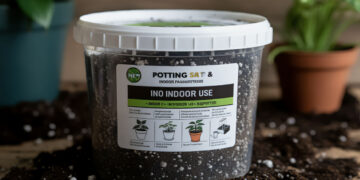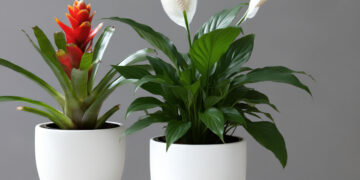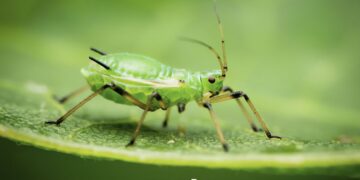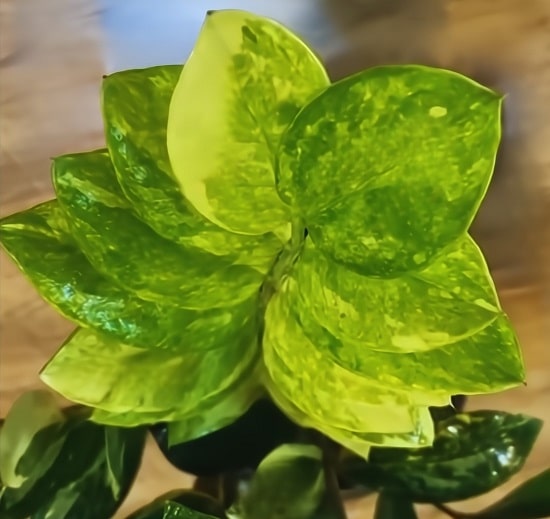
The Chameleon ZZ plant has universally captivated the hearts of many plant enthusiasts with its color-changing leaves, low maintenance, and drought resistance.
How to care for a Chameleon ZZ Plant? The tips usually revolve around lighting, watering, and using proper soil. The plant’s resilience and ease of care will do the rest.
What is the Chameleon ZZ Plant?
The Chameleon ZZ Plant (Zamioculcas zamiifolia Chameleon) is a remarkable variant of the traditional ZZ plant, cherished for its special foliage, which ranges from a bright, luminous yellow to deep, rich green as it matures.
The name Chameleon is owned by the animal since the Chameleon ZZ plant changes color, as does the adapting animal. The origin of the plant is Africa, the Eastern part to be exact. The plant belongs to the Araneae family and is renowned for its minimal requirements.
It’s an erect, semi-evergreen perennial that can reach heights and widths of 2 to 4 feet, making it a versatile addition to any indoor plant collection. Its gross anatomy appears erect, and it can grow as tall as 4 feet.
In terms of annual cycle, it is considered semi-evergreen perennial, with its visually appealing foliage the plant fixes its place in many houses and offices.
Care and Maintenance
Care and Maintenance of the Chameleon ZZ Plant can be boiled down into several points which are necessary for its growth in your home or office. Understanding and applying these factors to the plant will guarantee its health and vibrant appearance.
1. Light Requirements
The Chameleon ZZ Plant’s adaptability is exemplary, thriving across a spectrum of light conditions, from the dim corners of a room to spaces bathed in bright, indirect sunlight.
For optimal growth, place your Chameleon ZZ in a bright light-receiving spot in your house or office.
It is worth to warn that direct sunlight, especially during the harsh midday hours, should be avoided to prevent the leaves from getting scorched.
2. Watering Needs
The Chameleon ZZ Plant needs a meticulous approach to watering, a sine qua non of the principle of ‘less is more.’ Thanks to its water-storing rhizomes, it can hold water quite efficiently and survive long times of drought, making it needless to frequent watering.
The rule of thumb is to allow the soil to completely dry out between waterings. Typically, this translates to watering every 2-3 weeks, depending on the humidity and light conditions of your home. Be warned that overwatering is a common pitfall.
3. Soil and Repotting
Repotting a Chameleon ZZ Plant is not a frequent need, thanks to its comfort with being slightly root-bound. However, a key sign of the need for such roots peeking out of the pot`s holes.
Choose a pot that is one size larger than the current one to provide adequate space for growth without leaving too much empty soil, which could retain excess water.
Repotting in the spring allows the plant to recover and grow into its new space throughout the growing season.
4. Temperature and Humidity
The Chameleon ZZ Plant flourishes in a comfortable home environment, with an ideal temperature range between 60-75°F (15-24°C). This range mirrors the plant’s native tropical habitat, providing a warm and stable climate that promotes healthy growth.
As far as humidity is concerned, The Chameleon ZZ adapts well to average household humidity levels, making it a versatile choice for various indoor settings. However, if you’re looking to replicate its natural conditions more closely, maintaining a higher humidity level can encourage faster growth.
This doesn’t mean you need to invest in a humidifier; simple practices like placing a water tray near the plant or grouping it with other plants can naturally increase the surrounding humidity.
5. Fertilization
Fertilizing your Chameleon ZZ Plant is a straightforward process. The optimal fertilization schedule is during the growing seasons of spring and summer when the plant is most active.
A balanced, water-soluble fertilizer diluted to half the recommended strength and applied once every month is sufficient to provide the necessary nutrients without overdoing it to the plant.
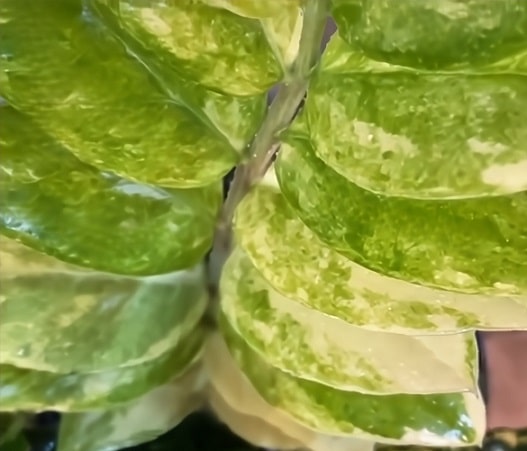
You might also like: can a ZZ plant live outside? Essential Guide to Outdoor ZZ Plant Care
Growth and Propagation
Growth Patterns
The Chameleon ZZ plant, on average, reaches 3 feet as tall. It usually occurs vertically, and the leaves change their color gradient from a striking yellow to a rich green as they mature,
Propagation Methods
There are two common and rather easy ways to propagate your lovely Chameleon ZZ plant: one is division, and the second is leaf cutting.
The division requires rhizome separation, while leaf cutting involves placing a healthy leaf into the soil. The latter, despite being more straightforward, with a higher success rate, is a somewhat slower procedure,
Common Issues and Solutions
Overwatering and Root Rot
The most prevalent issue is overwatering, leading to root rot. It happens because the water stagnates in and around the rhizomes which favors the fungal growth and its invasion. Signs include yellowing leaves and a mushy base.
Prevention is key. As a rule of thumb, let the top soil of the pot dry before the next watering session.
Underwatering
On the other extreme, underwatering causes leaves to droop and curl. Although Chameleon ZZ Plant is drought-tolerant, this does not mean that they are water independent.
Adjust your watering schedule based on how the water is draining and the ambient conditions, make sure the soil dries out before watering again. Water should be added slowly and incrementally to avoid shock to the plant.
Lighting Issues
Any point at the two ends of light can damage the Chameleon ZZ plant, in a low light milieu, the plant suffers from tardive growth, while too much or direct scorching light can injure the leaves.
Pest Infestations
Chameleon ZZ plant occasionally succumb to aphids or spider mites. If pests were to be spotted, treating the plant with a mild insecticidal soap would be warranted.
Infestations are generally rare, but watch out for root rot, which is indicated by a foul smell from the soil and discolored leaves. Improve drainage and reduce watering to fight against and ameliorate Nutrient Deficiencies.
My Personal Experience
My experience with the Chameleon ZZ Plant has been enlightening, teaching me patience and plant care as its colors transition from yellow to green, which I must admit it reconciled me to nature.
I must add that after a bout of root rot, I learned the significance of respecting its needs, especially regarding watering and lighting. Pest management became a lesson in vigilance and gentle cleaning.
Sharing and propagating the plant brought immense joy and satisfaction but giving a huge sense of accomplishment.
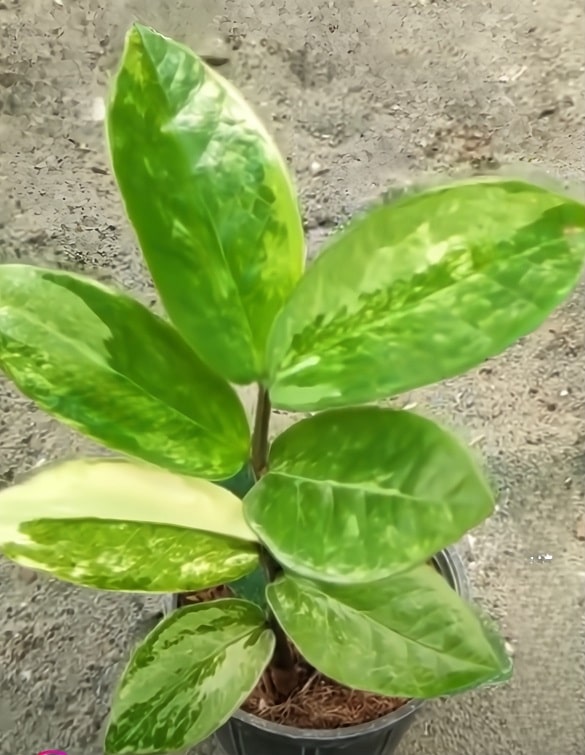
Here’s a source that might be interesting to read.
FAQs
Is the Chameleon ZZ Plant toxic to pets?
Yes, the Chameleon ZZ Plant contains calcium oxalate crystals, which can be toxic if ingested by pets. Keep the plant out of the pet’s reach.
How often should I water my Chameleon ZZ Plant?
Every 2-3 weeks, but less often in winter.
Can the Chameleon ZZ Plant survive in low light?
Yes, the Chameleon ZZ Plant is well-suited for low-light conditions; however, for proper growth, bright indirect light is recommended.
Why are the leaves of my Chameleon ZZ Plant turning yellow?
The Primary cause is overwatering or poor drainage, leading to root rot. Make sure the water is drained well.
How can I encourage more vibrant leaf color in my Chameleon ZZ Plant?
Place in a bright yet indirect light.
Can I use tap water to water my Chameleon ZZ Plant?
Yes, as long as the water does not contain or be treated with too many minerals. It would be better to use filtered or rainwater. This can prevent potential leaf tip burn caused by salt buildup in the soil.
What should I do if the leaves of my Chameleon ZZ Plant start drooping?
Drooping is commonly a sign of both overwatering and underwatering. Check the soil moisture level; if it’s too dry, water the plant carefully and gradually. If the soil is soggy, let it dry out more between waterings.

